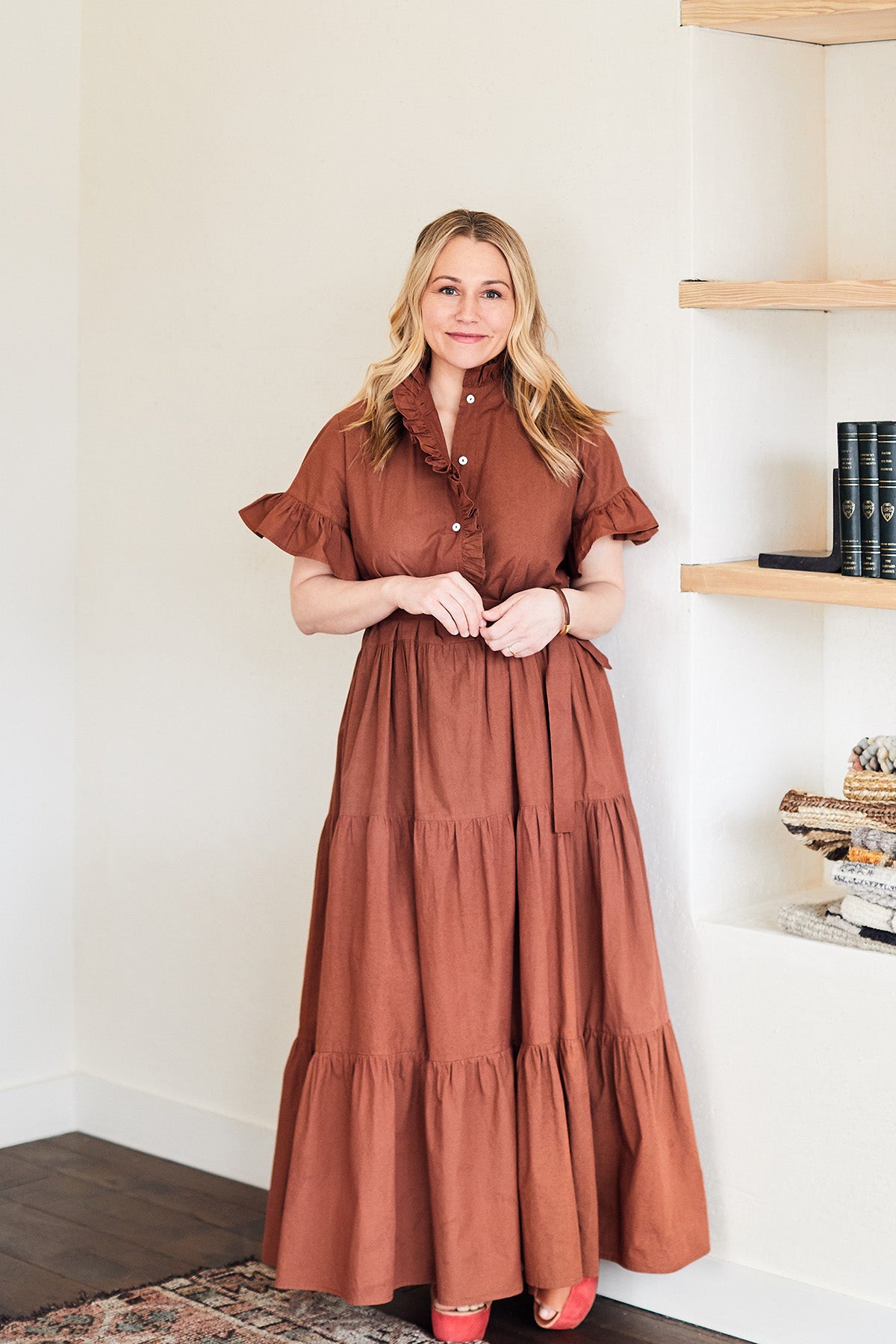In an era of multi-hyphenates, designer Victoria Sass prides herself on doing one thing exceedingly well. Though many designers enter the industry as a second career, Sass’s fate was set much earlier on, as she grew up repainting her room and fixing up old furniture, with dreams of someday attending design school. Fast-forward to today: After spending years in the industry and now leading her own firm, Sass has honed that initial resolve into a design-centric sixth sense.
“One of the clients we just signed, I’m so excited to work with him because I was like, ‘I can feel it in my bones that we can really help you,’” Sass tells host Kaitlin Petersen on the latest episode of Business of Home’s new podcast, Trade Tales. “Everything you need, we know exactly how to do, and I can just see down the road that they’re going to be so happy with what they end up with.”
This single-mindedness didn’t necessarily keep the naysayers away—one high school guidance counselor even attempted to nudge Sass into a more stable line of work. Still, she stuck with design, earning her degree from the University of Minnesota and working at a commercial firm after graduation. When the Great Recession hit, Sass soldiered on, taking up freelance commercial design gigs for restaurants and retail spaces.
Despite the sensible decisions that led her to that point, the designer soon had another moment of clarity—she caught a glimpse of herself 40 years down the line continuing the commercial work she’d been doing, and she wasn’t in love with what she saw. Tapping into her ever-reliable intuition, Sass made the decision to pivot to residential interiors.
In 2015, she started her own firm, Prospect Refuge Studio, with the intention of only doing things that felt right. Hitting the reset button wasn’t without its challenges—Sass was surprised to find differing market channels, contractors, products and materials in the residential sphere—but she knew she was in it for the long haul. She adapted quickly, summoning some of the influences from her past to channel what had always excited her about design.
“I always loved the storytelling piece of commercial work. … To try to carry that through to the residential side, you get to know people so deeply,” says Sass. “The name of our studio is based on my favorite design theory—that was the moment in college when I realized design is huge and can shape our feelings and behaviors. I think it's really fascinating to think about how we can apply that to our private lives as well as public spaces.”
Listen to the episode and check out some of the takeaways below. If you like what you hear, subscribe on Apple Podcasts or Spotify. This episode was sponsored by Universal Furniture and Currey & Company.
World-building
Rather than creating mood boards or flat lays, Sass approaches her design schemes as movie stills—each piece contributes to a grander narrative. Through conversations and time spent with clients and their families (a process the designer likens to anthropological research), that narrative is distilled into a concept statement that permeates each step in the design process. “It just makes the decision-making process so much smoother. People see it, they get it, and they know why we’re showing them what we’re showing them,” says Sass. “It doesn’t feel like, ‘Why should I pick option A or B? They’re just two equally valuable objects.’ When you put it in the context of which one gets you where you want to go, it makes one more valuable because it’s supporting the story.”
Finding your people
Throughout her career, the designer has often trusted her intuition to guide her. In initial client conversations, she moves toward the interactions that are fun and magnetic, when both client and designer are bouncing off each other. According to Sass, the connections based on a mutual enthusiasm almost always signal a deeper working relationship bound for success. “It sounds a little bit like gut instinct, but I do think there’s psychology behind it,” she says. “If you enjoy what you’re doing and who you’re working with, you’re going to work harder and you’re not fighting the wrong things.”
A firm with a life of its own
Sass recalls the sense of responsibility that came with making her first hire—suddenly someone was relying on her for stability and career growth. But she also remembers that documenting processes that previously had been only in her head forced her to grow. As she took on more employees, she learned to fully delegate tasks and summoned the courage to take off the training wheels, finding that it actually benefited employees to take on more responsibilities. “It’s really empowering for them to feel like, ‘I own this, and I’m really good at what I do,’” she says. And by handing off tasks, she has freed herself up to look further down the line, ensuring the firm continues on a path to success. “It really does become its own creature,” says Sass of the firm. “I’m beholden to it, and I’m trying to think about Prospect Refuge Studio—what does it want to be? Who does it want to be 10 years from now? [Now] I can take time to think about that actively and consciously.”
Homepage photo: Courtesy of Prospect Refuge Studio




























